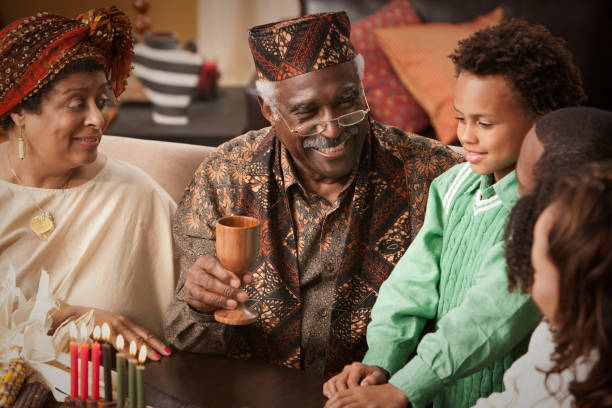
On the third day of Kwanzaa, you’ll celebrate its third principle. It’s meant to build on what you have explored and pledged so far. Therefore, it will be important to remember what you’ve learned and discussed in the previous days.
Day 3 of Kwanzaa: Ujima
The definition of Ujima is collective work and responsibility. When considering this principle, you’ll be focused on how everyone can work together to build the community around them in the pursuit of a common interest.
This common interest can be as small as rebuilding a family home or putting a working infrastructure in place within the neighborhood. In many cases, this translates into fixing broken elements at home or establishing a community center that will be helpful to everyone in the vicinity.
In fact, many people take a pledge to “build and maintain our community together and make our brothers and sister's problems our problems and solve them together.”
As this pledge suggests, Ujima isn’t only about celebrating communal successes but also accepting that you’ll share the burden of those failures as well. The point is that everyone will work together to learn from mistakes and build a stronger community.
It’s important to note that while you may start these projects on the third day of Kwanzaa, they don’t have to stop there. In the spirit of collective work and responsibility, you can make long-term plans to further benefit those around you.
Some examples include starting a program where the younger people in the community help seniors - especially in typically hard times such as winter and getting prepared for a hurricane. You can also think about putting a scholarship program in place or establishing a local food bank. All that matters is that your plan adds to the growth of everyone.
Day 3 of Kwanzaa is celebrated on December 28th.
RELATED: The Seven Days of Kwanzaa: Kujichagulia (Day 2)
How To Celebrate Ujima
To start the festivities, the leader asks "Habari gani?" or “What’s happening?” of those who are in attendance. Since it’s the third day, the answer will be Ujima to indicate that the time will be spent celebrating the principle of collective work and responsibility.
After the prayer, the older adults will prepare the libations as well as the unity cup or cups. The person who is responsible for lighting the candles will carry it out in this order - the black one is lit first, then the red candle to the left of it, and finally, the first green candle to the right.

The lit green candle symbolizes your commitment to working with others to build the community around you. As with the other days, the person who lights the candles will go on to make a statement about the principle of Ujima to enlighten those who are in the room. This is usually followed by a song, poem, passage, or story that highlights how Ujima is relevant to their lives. Interestingly, attendees are not only encouraged to discuss realistic ways that they can practice Ujima but they are also expected to do so.
RELATED: Kwanzaa: What It Really Is And How & Why It’s Celebrated
While presenting the details of your planned activities, you can decide to carry them out on the day or do them in the future. After the discussion, you’ll share the libations. If you’re sharing gifts, then that’s the next step of the celebrations. Once that has been done, the candles are extinguished and the day’s festivities are ended. If you made plans to do some community work on the day, then you’ll work on that afterward.
Having pledged unity, self-determination, and community work, you’ll be prepared to go even further in the subsequent days of the Kwanzaa celebration.








